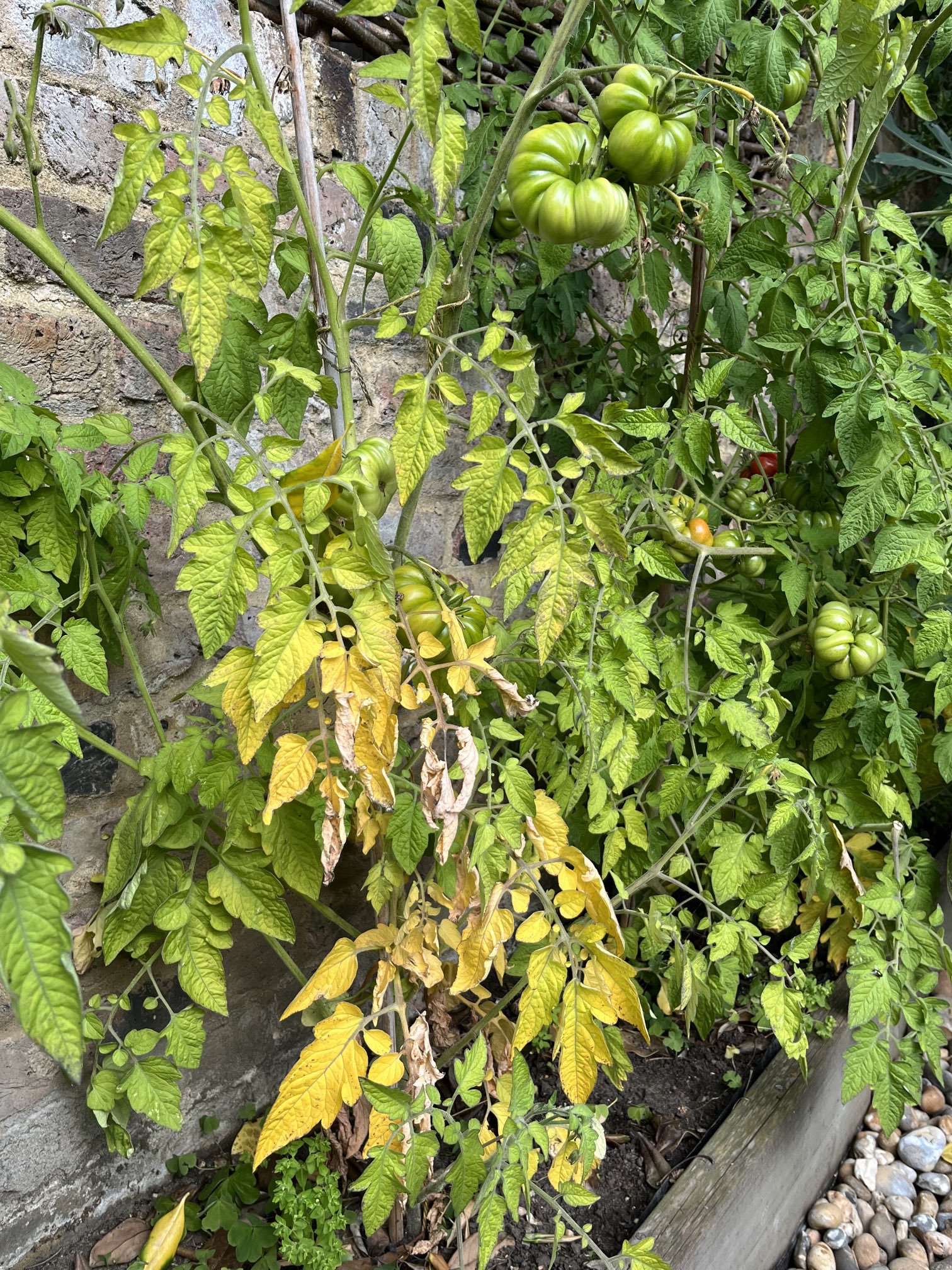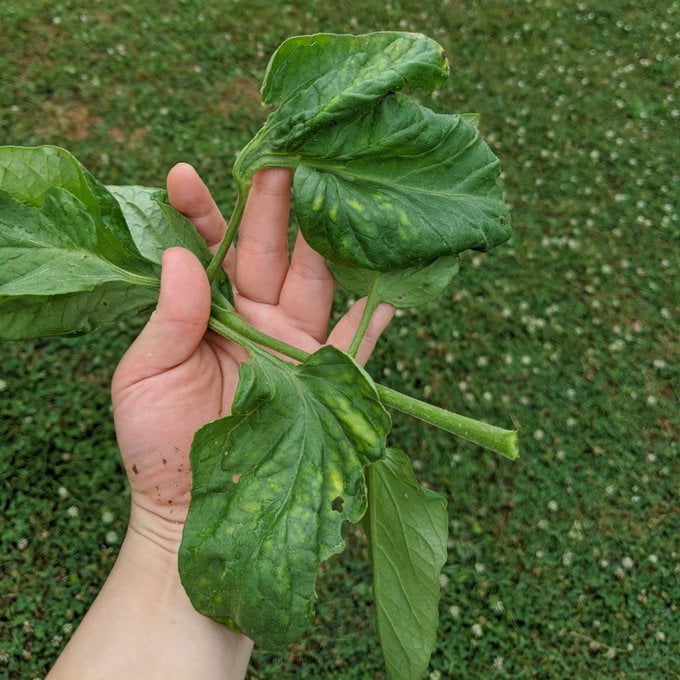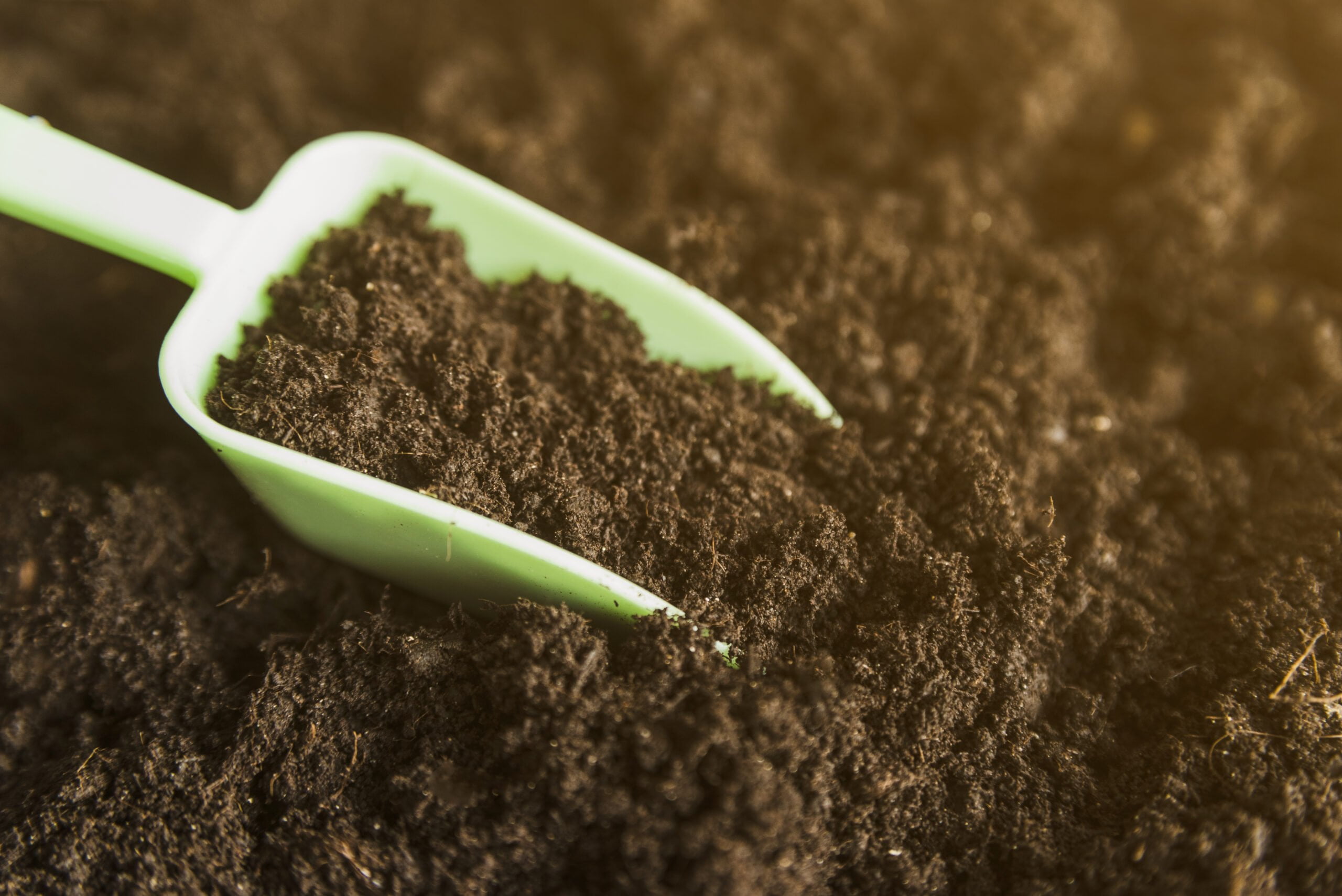Ah, the joys of tending to your garden, where vibrant tomato plants thrive under the sun’s tender care, promising a bountiful harvest. But what happens when those lush green leaves start to pale and wither? You might be dealing with a sneaky culprit – nitrogen deficiency in tomato plants. Fear not, dear gardener, for we’re about to dive headfirst into this mystery, exploring the why, the how, and, most importantly, the “how to fix it” when your tomato babies scream out for nitrogen!
Table of Contents
Symptoms Of Nitrogen Deficiency in Tomato Plants
When your tomato plants yearn for nitrogen, they’ll drop some hints like clues in a detective novel. But remember, not all plants act the same way, so keep a keen eye out for these telltale signs:
Chlorosis: Yellowing of Older Leaves

As your once-vibrant tomato leaves gradually shift from their lush, verdant green to a paler, almost yellowish hue, it’s as if nature itself is sending out a distress signal. This visual transformation in the foliage is a clear and universal indicator that something isn’t quite right in your tomato garden.
This subtle yet significant shift in coloration is akin to a silent cry for help from your tomato plants. It’s their way of signaling, “Houston, we have a problem.” Much like a skilled detective interpreting cryptic clues, you, the diligent gardener, must decode this botanical distress call.
Yellowing leaves are often the first sign that your tomatoes are grappling with an issue, and the culprit may indeed be nitrogen deficiency. When this essential nutrient is in short supply, the chlorophyll in the leaves, responsible for their green pigment, starts to break down. As a result, your once-vibrant foliage begins to lose its vitality and richness, transitioning to a less appealing yellowish tinge.
But fear not, for you’re now well-equipped to recognize this visual SOS from your tomato plants. Armed with this knowledge, you can embark on a quest to rectify the situation, nurse your tomatoes back to health, and ensure they return to their former lush, green glory.
Sluggish Growth
When you’re tending to your beloved tomato plants, you expect them to be the picture of vitality and growth. But what happens when those green darlings start to resemble the leisurely pace of a sloth, inching along with a notable lack of vigor? It’s at this moment that you encounter yet another unmistakable red flag in the mystery of nitrogen deficiency.
Slow growth is a classic and prominent symptom of nitrogen deficiency in tomato plants. It’s akin to your tomato plants hitting a roadblock on their journey to flourishing maturity. In the world of gardening, a plant’s growth rate is often a telltale sign of its overall health and well-being. When your tomato plants start displaying the pace of a sloth’s crawl, it’s as though they’re trying to communicate something vital to you.
Nitrogen, being a crucial component of chlorophyll—the green pigment that drives photosynthesis—is a key player in the growth and development of plants. It’s the fuel that propels the creation of new leaves, stems, and branches, fostering the plant’s expansion and ensuring it thrives. When nitrogen is deficient, it’s as if the plant’s energy reserves have been depleted, leading to a noticeable reduction in growth rate.
Imagine your tomato plants as eager, energetic sprinters in a race. With ample nitrogen, they dash ahead, reaching for the sky. But in the absence of this essential nutrient, they’re like tired runners struggling to make progress. Their growth becomes sluggish, almost as if they’ve lost their vitality and motivation to push forward.
So, if your once-energetic tomato plants have taken on the pace of a slow, deliberate saunter, it’s time to heed this unmistakable signal and delve deeper into the case of nitrogen deficiency. Uncover the clues, provide the necessary nitrogen boost, and watch your tomatoes regain their sprinter’s spirit as they surge towards a healthier and more vigorous future.
Smaller Tomatoes
When your tomato plants begin producing smaller-than-expected tomatoes, it’s a cause for concern. This unusual behavior in the garden may be an indicator of nitrogen deficiency, a condition that can lead to a reduction in the size of your valuable fruit. Nitrogen is an essential nutrient for plant growth, and its deficiency can impact the development of your tomatoes, resulting in them being smaller in size than you’d like. It’s important to address this issue by providing the necessary nutrients and care to help your tomato plants thrive and produce the desired larger fruits.
What Causes Nitrogen Deficiency In Tomato Plants
Now that we’ve got our Sherlock Holmes hat on, let’s uncover the mystery behind nitrogen deficiency in tomato plants. But remember, nitrogen is a critical nutrient for plant growth. When it’s in short supply, your tomato plants can’t perform photosynthesis effectively, which is essential for their well-being.
The “N” in NPK
Nitrogen is one of the “Big Three” nutrients, along with phosphorus and potassium, often labeled as NPK on fertilizers. It’s like the holy trinity for your plants. Nitrogen is responsible for leafy growth and lush green foliage. When it’s missing, your tomatoes suffer.
Soil Chemistry Shenanigans
Sometimes, the soil pH can go rogue, making nitrogen less available to your plants. Acidic soils, pH levels below 6.0, can lock away nitrogen, keeping it just out of reach.
Overwatering Woes
Ever heard the phrase “too much of a good thing”? That applies to water, too. Overwatering tomato plants can wash away nitrogen from the root zone, leaving your tomatoes feeling famished.
Fixing Nitrogen Deficiency In Tomato Plants

Now, let’s tackle the real question: How do we get those tomatoes back to their thriving selves? Detective hat, still on!
Choosing the Right Fertilizer
The good news is that nitrogen deficiency is easily fixable. Find a balanced fertilizer with a higher first number in the NPK ratio (like 10-10-10). This will give your tomatoes the nitrogen boost they desperately need.
Slow and Steady Wins the Race
Be patient, dear gardener. It’s a gradual process. Apply the fertilizer as directed on the packaging and give your plants some time to soak up that goodness.
Adjusting Soil pH
If your soil’s playing hard to get with its nitrogen, consider adjusting the pH. You can use lime to raise the pH in acidic soils, making the nitrogen more available to your plants.
Soil Testing – A Must-Do

Before you make any pH-altering moves, be sure to test your soil’s pH. It’s like knowing the combination to a safe – you don’t want to mess it up.
Precision Watering
We’ve got to talk about watering habits. Water your tomatoes wisely, not wastefully. The right balance ensures that nitrogen stays within reach of your plants.
Water Early in the Day
Morning is the ideal time for a drink. Watering in the morning gives your plants time to absorb the moisture and nutrients before the scorching sun arrives.
Mulch Magic
Applying mulch around your tomato plants helps maintain soil moisture, reducing the risk of overwatering.
Conclusion
As we wrap up this gardening mystery, you’re now armed with the knowledge and tools to battle nitrogen deficiency in tomato plants. Your tomatoes are counting on you to be their Sherlock Holmes, so keep a vigilant eye for the signs, supply them with the right nutrients, and ensure their soil conditions are just perfect.
With the right care and a little detective work, your garden will be bursting with plump, sun-kissed tomatoes. Remember, gardening is an adventure, and every challenge is just another opportunity to learn and grow. So, go out there, enjoy the journey, and savor the delicious rewards of your hard work. Nitrogen deficiency? Not in your garden!
